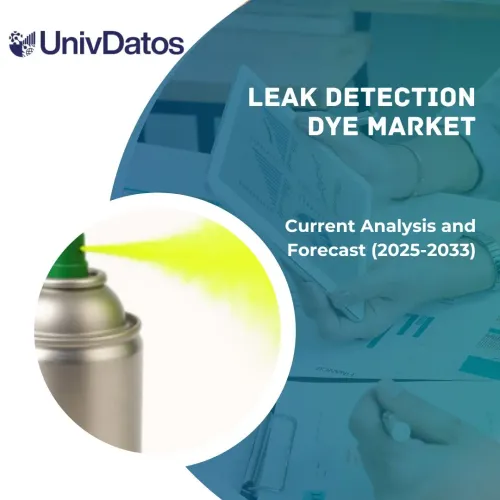- Startseite
- Über uns
- Industrie
- Dienstleistungen
- Lesen
- Kontaktieren Sie uns
Markt für Bernsteinsäure: Aktuelle Analyse und Prognose (2022-2028)
Schwerpunkt auf Typ (Petro-basiert und Bio-basiert); Endverbraucher (Allgemeine Industrie, Farben & Beschichtungen, Lebensmittel & Getränke, Körperpflege & Kosmetika, Pharmazeutika und Sonstige); Region und Land

Der globale Markt für Bernsteinsäure wird während des Prognosezeitraums voraussichtlich um etwa 8 % wachsen.Bernsteinsäure ist eine vielseitige chemische Verbindung, die in einer Reihe von Industrien eingesetzt wird. Sie hat ein enormes Potenzial als Plattformchemikalie für eine Reihe von Industriechemikalien. Sie wird derzeit als Zwischenprodukt bei der Herstellung von Polyestern, Alkydharzen, Polyurethanen, Weichmachern, 1,4-Butandiol und Lösungsmitteln verwendet. Außerdem wird sie als Aromastoff für Lebensmittel und Getränke verwendet. In der pharmazeutischen Industrie wird sie bei der Herstellung von Medikamenten für Beruhigungsmittel, Antispasmolytika, Antiplegmatika, Antiphlogistika, Verhütungsmittel und Krebsheilmittel eingesetzt. Da die globale Endverbraucherindustrie im Laufe des Jahres ein enormes Wachstum verzeichnet hat und voraussichtlich ihre historische Performance beibehalten wird, dürfte die Nachfrage nach Chemikalien und Zwischenprodukten, einschließlich Bernsteinsäure, während des Prognosezeitraums steigen. Darüber hinaus wird Bernsteinsäure als eine der zwölf wichtigsten Bausteinchemikalien identifiziert, die aus nachwachsenden Rohstoffen hergestellt werden könnten, was das Interesse der Chemiehersteller an einer Erhöhung ihrer Investitionen in diesem Bereich steigert.
Im Bericht dargestellte Erkenntnisse
„Von den Typen wird die Kategorie der biobasierten Produkte während des Prognosezeitraums voraussichtlich eine schnellere Wachstumsrate aufweisen“
Basierend auf dem Typ wird der Markt in petrobasierte und biobasierte Produkte unterteilt. Von beiden wird die biobasierte Kategorie voraussichtlich ein schnelleres Wachstum im Prognosezeitraum aufweisen. Die hohen Kosten, die mit der herkömmlichen Herstellung von Bernsteinsäure unter Verwendung des aus Erdöl gewonnenen Maleinsäureanhydrids verbunden sind, sowie die umweltunfreundliche Produktionsmethode erhöhen das Interesse an biobasierter Bernsteinsäure. Darüber hinaus erhöht das globale Ziel, Kohlenstoffneutralität zu erreichen, den Fokus der chemischen Industrie auf die Verwendung von Alternativen zu fossilen Brennstoffen für die chemische Produktion, was das Wachstum der biobasierten Kategorie unterstützt.
„Von den Endverbrauchern hielt die allgemeine Industriekategorie im Jahr 2020 eine herausragende Position auf dem Markt“
Basierend auf den Endverbrauchern wird der Markt in allgemeine Industrie, Farben & Beschichtungen, Lebensmittel & Getränke, Körperpflege & Kosmetika, Pharmazeutika und Sonstige unterteilt. Von diesen nahm die allgemeine industrielle Anwendung eine starke Position auf dem Markt ein und wird diese Position voraussichtlich im Prognosezeitraum beibehalten. Bernsteinsäure wird unter anderem in Tetrahydrofuran, 1,4-Butandiol, Urethan und Weichmachern verwendet. Diese Produkte finden Anwendung in einer Reihe von Industrien. Beispielsweise wird 1,4-Butandiol als Lösungsmittel in der chemischen Industrie verwendet, während es als wichtiger Rohstoff in der Faserherstellung wie Spandex eingesetzt wird.
„Der asiatisch-pazifische Raum wird während des Prognosezeitraums voraussichtlich ein signifikantes Wachstum verzeichnen“
Für ein besseres Verständnis der Marktakzeptanz von Bernsteinsäure wird der Markt auf der Grundlage seiner weltweiten Präsenz in Ländern wie Nordamerika (die Vereinigten Staaten, Kanada, Rest von Nordamerika), Europa (Deutschland, Vereinigtes Königreich, Frankreich, Italien, Spanien und Rest von Europa), Asien-Pazifik (China, Japan, Indien und Rest von Asien-Pazifik) und Rest der Welt analysiert. Die Region Asien-Pazifik nahm eine starke Position auf dem Markt ein und wird voraussichtlich im Prognosezeitraum eine positive Dynamik beibehalten. Die Region ist ein globales Produktionszentrum und gehört zu den größten Produzenten und Verbrauchern von Produkten, bei denen Bernsteinsäure als wichtiger Baustein verwendet wird. Die große Demografie der Region, zusammen mit dem steigenden Pro-Kopf-Einkommen und der zunehmenden Konzentration der regionalen Volkswirtschaften auf den Exportmarkt, bringt eine größere Anzahl von Endverbraucherindustrien in die Region. Aufgrund dieser Faktoren zeigt die Nachfrage nach Bernsteinsäure ein positives Wachstum.
Gründe für den Kauf dieses Berichts:
- Die Studie umfasst eine Marktgrößen- und Prognoseanalyse, die von authentifizierten Branchenexperten validiert wurde
- Der Bericht bietet einen schnellen Überblick über die Gesamtleistung der Branche auf einen Blick
- Der Bericht enthält eine eingehende Analyse prominenter Branchenteilnehmer mit einem primären Fokus auf wichtige Finanzkennzahlen des Geschäfts, Produktportfolio, Expansionsstrategien und jüngste Entwicklungen
- Detaillierte Untersuchung der Triebkräfte, Einschränkungen, wichtigsten Trends und Chancen, die in der Branche vorherrschen
- Die Studie umfasst umfassend den Markt über verschiedene Segmente hinweg
- Detaillierte Analyse der Branche auf Länderebene
Anpassungsoptionen:
Der globale Markt für Bernsteinsäure kann weiter an die Anforderungen oder jedes andere Marktsegment angepasst werden. Darüber hinaus versteht UMI, dass Sie möglicherweise Ihre eigenen geschäftlichen Anforderungen haben. Nehmen Sie daher Kontakt mit uns auf, um einen Bericht zu erhalten, der vollständig Ihren Anforderungen entspricht.
Inhaltsverzeichnis
Forschungsmethodik für die globale Marktanalyse von Bernsteinsäure (2020-2028)
Um den historischen Markt zu analysieren, den aktuellen Markt zu schätzen und den zukünftigen Markt für Bernsteinsäure zu prognostizieren, werden drei Hauptschritte unternommen, um seine Akzeptanz auf der ganzen Welt zu erstellen und zu analysieren. Es wurden umfassende Sekundärrecherchen durchgeführt, um die historischen Marktzahlen zu sammeln und die aktuelle Marktgröße zu schätzen. Zweitens wurden zur Validierung dieser Erkenntnisse zahlreiche Ergebnisse und Annahmen berücksichtigt. Darüber hinaus wurden umfassende Primärinterviews mit Branchenexperten entlang der Wertschöpfungskette der Branche durchgeführt. Nach Annahme und Validierung der Marktzahlen durch Primärinterviews haben wir einen Bottom-up-Ansatz verwendet, um die gesamte Marktgröße zu prognostizieren. Danach wurden Marktaufschlüsselungs- und Datentriangulationsmethoden angewendet, um die Marktgröße der Segmente und Untersegmente der Branche zu schätzen und zu analysieren. Die detaillierte Methodik wird im Folgenden erläutert:
Analyse der historischen Marktgröße
Schritt 1: Eingehende Untersuchung von Sekundärquellen:
Es wurden detaillierte Sekundärstudien durchgeführt, um die historische Marktgröße von Bernsteinsäure aus internen Unternehmensquellen wieJahresberichten und Finanzberichten, Leistungspräsentationen, Pressemitteilungen usw.und externen Quellen, einschließlichZeitschriften, Nachrichten & Artikeln, Veröffentlichungen der Regierung, Veröffentlichungen von Wettbewerbern, Branchenberichten, Datenbanken von Drittanbietern und anderen glaubwürdigen Veröffentlichungen.
Schritt 2: Marktsegmentierung:
Nachdem wir die historische Marktgröße des Marktes für Bernsteinsäure ermittelt hatten, führten wir eine detaillierte Sekundäranalyse durch, um aktuelle Markteinblicke und Anteile für verschiedene Segmente & Untersegmente für wichtige Regionen zu sammeln. Das Hauptsegment ist im Bericht nach Typ und Endverbraucher enthalten. Darüber hinaus wurden regionale und länderbezogene Analysen durchgeführt, um die allgemeine Akzeptanz von Bernsteinsäure weltweit zu bewerten.
Schritt 3: Faktorenanalyse:
Nachdem wir die historische Marktgröße verschiedener Segmente und Untersegmente ermittelt hatten, führten wir eine detaillierteFaktorenanalysedurch, um die aktuelle Marktgröße von Bernsteinsäure zu schätzen. Darüber hinaus führten wir eine Faktorenanalyse unter Verwendung abhängiger und unabhängiger Variablen durch, wie z. B. die großen und wachsenden Endverbraucherindustrien und die steigende Nachfrage nach biobasierten Produkten. Es wurde eine gründliche Analyse der Angebots- und Nachfrageszenarien durchgeführt, wobei die zunehmenden Investitionen, Top-Partnerschaften, Fusionen und Übernahmen, Geschäftserweiterungen und Produkteinführungen in der Bernsteinsäureindustrie berücksichtigt wurden.
Aktuelle Marktschätzung und Prognose
Aktuelle Marktgrößenbestimmung:Basierend auf umsetzbaren Erkenntnissen aus den obigen 3 Schritten kamen wir zur aktuellen Marktgröße, den wichtigsten Akteuren auf dem globalen Markt und den Marktanteilen jedes Segments. Alle erforderlichen prozentualen Anteile, Aufteilungen und Marktübersichten wurden unter Verwendung des oben genannten Sekundäransatzes ermittelt und durch Primärinterviews verifiziert.
Schätzung & Prognose:Für die Marktschätzung und -prognose wurden den verschiedenen Faktoren, einschließlich der Treiber & Trends, Einschränkungen und Chancen für die Stakeholder, Gewichte zugewiesen. Nach der Analyse dieser Faktoren wurden relevante Prognosetechniken, d. h. der Bottom-up-Ansatz, angewendet, um die Marktprognose für 2028 für verschiedene Segmente und Untersegmente in den wichtigsten Regionen weltweit zu erstellen. Die Forschungsmethodik zur Schätzung der Marktgröße umfasst:
- Die Marktgröße der Branche, ausgedrückt in Wert (US$) und die Akzeptanzrate von Bernsteinsäure in den wichtigsten Märkten
- Alle prozentualen Anteile, Aufteilungen und Aufschlüsselungen von Marktsegmenten und Untersegmenten
- Wichtige Akteure auf dem Markt für Bernsteinsäure. Außerdem die Wachstumsstrategien, die diese Akteure anwenden, um auf dem schnell wachsenden Markt zu konkurrieren
Marktgrößen- und Anteilvalidierung
Primärforschung:Es wurden ausführliche Interviews mit den Key Opinion Leadern (KOLs) geführt, darunter Top-Level-Führungskräfte (CXO/VPs, Vertriebsleiter, Marketingleiter, Betriebsleiter, Regionalleiter, Ländermanager usw.) in den wichtigsten Regionen. Die Ergebnisse der Primärforschung wurden dann zusammengefasst, und eine statistische Analyse wurde durchgeführt, um die aufgestellte Hypothese zu beweisen. Die Eingaben aus der Primärforschung wurden mit den Sekundärergebnissen konsolidiert, wodurch Informationen in umsetzbare Erkenntnisse umgewandelt wurden.
Aufteilung der primären Teilnehmer nach Stakeholdern und Regionen

Markt-Engineering
Die Datentriangulationstechnik wurde eingesetzt, um die gesamte Marktschätzung abzuschließen und präzise statistische Zahlen für jedes Segment und Untersegment des globalen Bernsteinsäuremarktes zu erhalten. Die Daten wurden nach der Untersuchung verschiedener Parameter und Trends im Bereich Typ und Endverbraucher in mehrere Segmente und Untersegmente aufgeteilt.
Das Hauptziel der Bernsteinssäure-Marktstudie
Die aktuellen und zukünftigen Markttrends von globaler Bernsteinsäure wurden in der Studie ermittelt. Investoren können strategische Erkenntnisse gewinnen, um ihre Entscheidungsgrundlage für Investitionen auf der in der Studie durchgeführten qualitativen und quantitativen Analyse zu basieren. Aktuelle und zukünftige Markttrends würden die Gesamtattraktivität des Marktes auf Länderebene bestimmen und eine Plattform für die Industriebeteiligten schaffen, um den unerschlossenen Markt auszuschöpfen und als First-Mover-Vorteil zu profitieren. Weitere quantitative Ziele der Studien umfassen:
- Analyse der aktuellen und prognostizierten Marktgröße von Bernsteinsäure in Bezug auf den Wert (US$). Analysieren Sie auch die aktuelle und prognostizierte Marktgröße verschiedener Segmente und Untersegmente
- Die Segmente in der Studie umfassen den Bereich Typ und Endverbraucher
- Definierte Analyse des regulatorischen Rahmens für die Bernsteinsäure-Industrie
- Analyse der Wertschöpfungskette unter Einbeziehung verschiedener Intermediäre sowie Analyse des Kunden- und Wettbewerbsverhaltens der Branche
- Analyse der aktuellen und prognostizierten Marktgröße von Bernsteinsäure für die wichtigsten Länder
- Zu den in dem Bericht analysierten Hauptregionen/Ländern gehören Nordamerika (die Vereinigten Staaten, Kanada, Rest von Nordamerika), Europa (Deutschland, das Vereinigte Königreich, Frankreich, Italien, Spanien, Rest von Europa), Asien-Pazifik (China, Japan, Indien, Rest von Asien-Pazifik) und Rest der Welt
- Unternehmensprofile der Akteure auf dem Bernsteinsäuremarkt und die von ihnen angewandten Wachstumsstrategien, um den wachsenden Markt zu erhalten
- Detaillierte Analyse der Branche auf Länderebene
Verwandt Berichte
Kunden, die diesen Artikel gekauft haben, kauften auch










